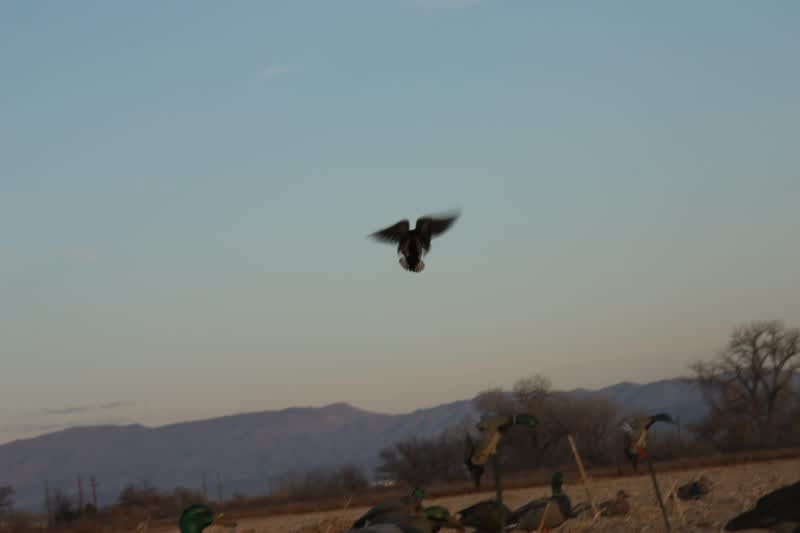Five Tips for a Successful Waterfowl Season
The Birdmen 09.14.12

Denis Isbister and Dale Dyer of The Birdmen television series have hunted all across the country from Canada to Colorado and many places in between. There are a few key things that make these avid waterfowl hunters successful day in and day out when others are struggling, especially during tough conditions. They have compiled a list of the top 5 things that are the most important “tricks of the trade” to help you out this season.
1) Scouting
The most important element when hunting waterfowl in any situation is knowing the birds’ habits. It is crucial to your setup to know what time the birds are flying, where they are roosting, what they are feeding on, their flight patterns and any subtle nuances to key in on to make a successful hunt. Scouting is not just about the birds but also about the situation you are hunting. You need to be scouting cover, weed edges, locations the birds like in the field, how they approach and what direction they prefer to land with no wind. We will spend days scouting for one day of good hunting rather than winging it and hoping for the best. The more time you spend scouting the more successful you will be in the field.
2) Concealment
After you have found the birds and know exactly how you want to hunt a particular place, it is crucial to your hunt to become invisible. We have witnessed too many hunts wasted because hunters were too lazy to go the extra mile. Whether you are hunting private property or public land, this is where hard work can make or break you. One example of this is when we hunt the edge of a field with layout blinds: we always decorate approximately 25 yards on both sides of the blinds. This provides a more convincing look and a harder job to pick out your hide. When you go the extra mile and the birds show up, you know you’re invisible.
3) Motion and decoy placement
At this point you know what the birds are doing and know you’re hidden. Now it’s time to figure out your decoy spread and you should have a good idea from your scouting for this job. You should be placing decoys according to how they were situated in the field/marsh the day prior. For example, if the geese were landing in a freshly-cut grain field and are situating themselves in small family groups along the cut lines, copy that. If the birds were landing in a giant mob and feeding their way out, then make your spread accordingly. Always use flagging, mojos and jerk strings when possible. Motion in your spread is one of the most crucial aspects to finishing birds close.
4) Calling
Calling ducks and geese can be one of the most effective ways to fool birds, but knowing when to call and what sounds to make can make or break the hunt. There are two basic situations when waterfowl hunting, a “traffic” hunt and “on the X” and they both require different calling techniques. If you have done your job scouting and were lucky enough to secure permission on a place where the birds want to be, well then the hardest part of this equation is over, you’re “on the X”. When the birds show up and you’re hidden well with the decoys placed correctly, focus on the sounds you are most comfortable with. Too many times I have witnessed guys that have have birds with feet down on a string and start blowing their awful sounding call with even worse notes, only to have the birds swap ends and leave the country. Stick with what you are good at and don’t blow them out.
The other situation is a “traffic” hunt. This requires a much different set of calling skills and it will often make you work for your birds. These hunts are often much more difficult but also much more rewarding. If you are not a good caller, stick with the sounds you make the best but invite some friends that are good callers to help out. Dale and I have been calling for years and we find ourselves in these situations regularly, and this is how we do it. We use what we consider to be the best calls, Bill Saunders calls, then when the birds are about 1,000 yards out we start hitting them hard with flags mixed in with as much noise as we can make. Everyone who can make a goose noise gets loud and excited; this will turn the birds your way, when the birds get close we back off and make the most excited goosiest sounds possible. This has made the difference on too many hunts to count. If you are not good on a call, get better and buy some good calls.
5) Let the birds work
Letting the birds work is a simple yet sometimes overlooked aspect of what people consider success. Killing birds is not as important as how you killed them. When we decoy birds we rarely take shots if the birds aren’t 30 yards and in. This season, try letting those first pass shots go at 50 yards and get the birds to finish. You will no doubt miss a few opportunities but when you finish a group at 15 yards, back peddling in the decoys it will be worth it. You will learn much more about decoying thus becoming a better hunter along with making more ethical kills.

If you use these five tips it will help you be more successful and have more fun enjoying the outdoors.
these 5 tips it will help you be more successful and have more fun enjoying the outdoors.

